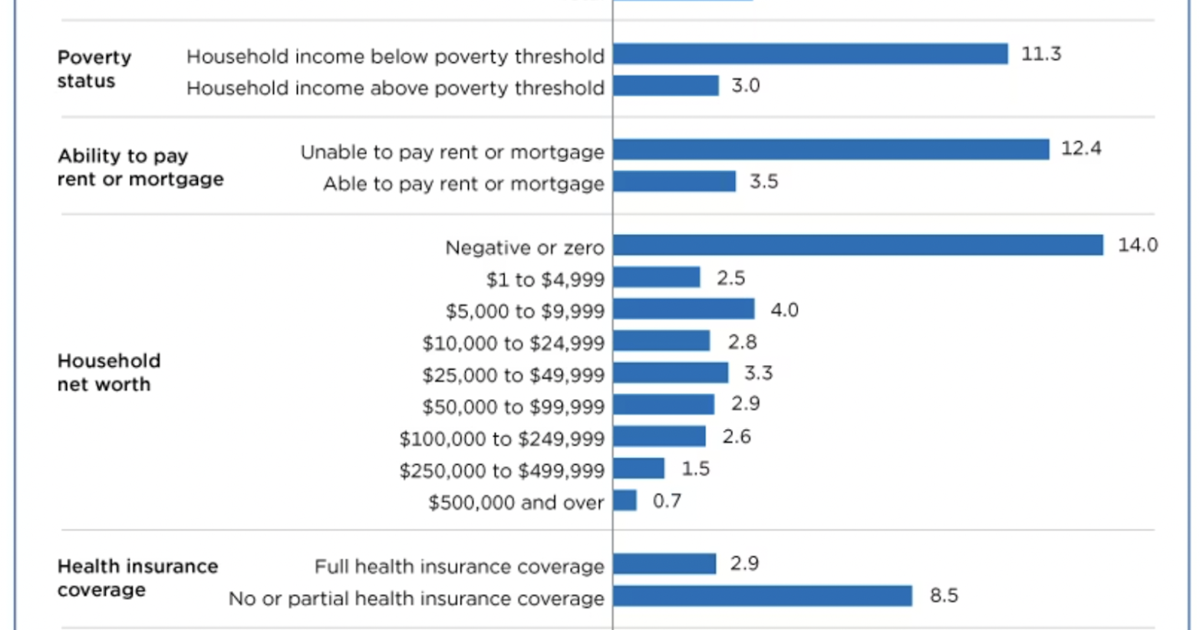Rim Country residents face homelessness due to health issues
3 minute readPublished: Tuesday, April 11, 2023 at 12:30 pm

Copy article link
Save
Mark Gray and Tammy Greenameyer quietly sat waiting for dinner at the Warming Center on a Monday evening.
The couple will be homeless in July if they cant find somewhere else to live.
I had a home when I was able to work, said Gray.
Gray worked on a ranch in Nucla, a small town in Colorado. However, working with horses can be dangerous. He suffered assorted broken bones in falls and incidents. Ultimately, his injuries caught up with him. Soon, he had to focus all his time and a lot of his money on getting to and from health care appointments. He couldnt keep up with his car payments, medical bills and mortgage, so he lost the home hed had for 15 years.
Greenameyer met Gray just a few years ago after her husband died of alcoholism. Gray asked to give her a ride home as she carried bags of groceries. Greenameyer has health struggles, too. She has diabetes and a mental health condition.
Because of their constant medical needs, insulin and the medical supplies keep them constantly seeking better care and support. Because it was Monday, the medical students from the rural medical program come to give advice and medical help to Warming Center clients. Gray and Greenameyer asked for help because the two need more medical care than they have been able to find. The students referred them to the Christian Clinic for more support.
Despite their troubles, Greenameyer says they try to help those worse off than them.
We give away the clothes we dont need, she said.
Both have qualified for SSI, or Supplemental Security Income, the safety net for Americans too ill to work. It pays very little.
It went from $600 a month to $900 a month this past January, said Gray.
Thats still not enough to afford rent, which often runs $1,000 or more a month.
So they set out from their little Colorado town and ended up in Payson because Gray wanted better weather and medical.
Its been a hard road since.
I used to be able to go anywhere and find a place to live, said Gray, but back then he could work a steady job and the cost of living was more reasonable.
Gray and Greenameyer represent a growing number of U.S. citizens facing homelessness because of medical bills and inflation. The Department of Housing and Urban Development says homelessness increased 3% between 2020 and 2022. However, the number of homeless people with disabilities increased 16%.
Roughly 600,000 people in the US are homeless on any night. One in four of the homeless are families with children. Roughly a third of them face persistent, long-term homelessness.
Skyler Brice, director for the New Directions Warming Center in Payson, said the rising number of older folks coming to dinner at the Warming Center has been labeled, the silver tsunami. He sees more and more seniors who cant afford food.
Homeless shelters across the US have reported a surge in waiting lists. Experts blame inflation, the end of pandemic relief programs, the end of a moratorium on evictions, an increase in housing prices and the soaring cost of medical coverage for the homeless crisis.
Medical bills now account for an estimated 60% of bankruptcies. A survey of Seattle homeless found medical debt puts many people out on the street.
A federal 2020 Survey of Income and Program Participation found one in four households with a disabled person had medical debt compared to homes without a disabled family member.
Gray and Greenameyer now face homelessness. Gray swapped out his talent at fixing up things for part of his rent last July. Now the landlord wont renew the lease because he wants more money for rent than Gray and Greenameyer can pay.
I dont know where to go in four months, said Gray.
The two hope to find a mobile home to rent, but their unpaid medical debt has destroyed their credit rating.
I had a 740 and now its down to 300, said Greenameyer.
They stretch their meager dollars by going to the Warming Center for a couple of meals a week and bounce back and forth between food banks.
Food banks limit you, said Gray.
Greenameyer doesnt want to take more than their share.
We dont want to take too much when others need so much, she said.
Brice confirmed folks like Gray and Greenameyer must alternate weeks with each food bank due to limits.
The couple has found themselves in the Supplemental Security Income trap which provides an average benefit of about $1,000 a month not enough to live on. Then, if recipients earn additional money the payment from SSI goes down.
Even so, many people struggle to qualify for any benefits. About 61% of applicants are denied when they first apply including 15% denied for technical reasons. The rest are denied for medical reasons. The denial rate has increased over time and the income limits have also shrunk. Most recipients have no other source of income although those over 65 can also receive social security payment, according to the Center for Budget Priorities.
The two have also sought help from Gila Countys Community Action Program. CAP offers rent and utility support, but only for a short time and only after providing a stack of documents.
CAP offered to help pay Gray and Greenameyers winter propane bill, but that still hasnt happened.
We now owe $900 to the gas company, said Gray.
When the couple asked about the delay, CAP asked for more paperwork.
I tell them, We got you that paperwork, but they say they need more, said Gray.
It makes Greenameyer feel terrible.
They need to be in our shoes, to be treated like an outcast, she said.
Gray and Greenameyer say theyd love any leads on an affordable living situation. Call 928-255-7028.